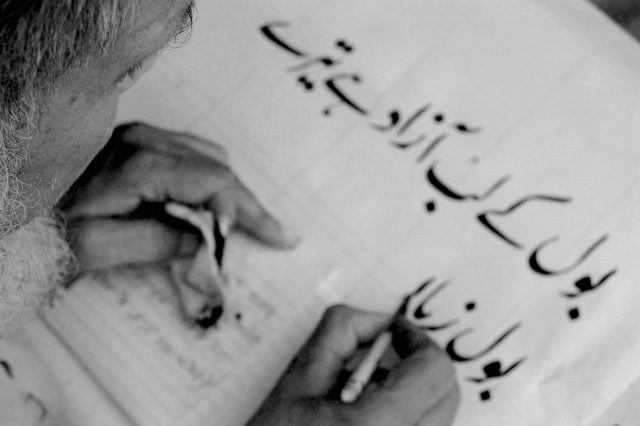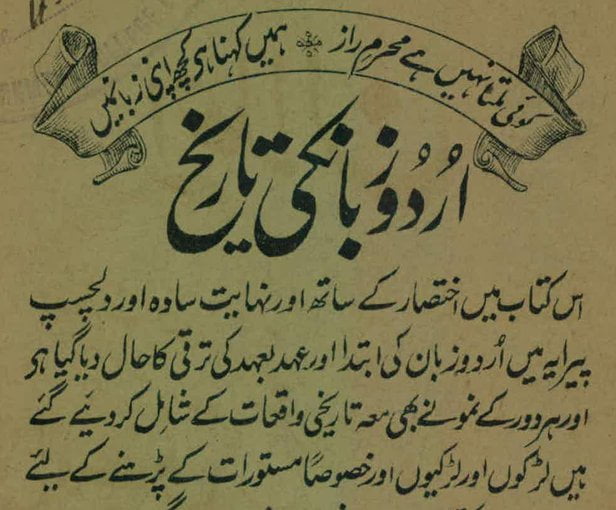Did you know that in India, 6 states out of the 29 namely West Bengal, Jammu and Kashmir, Telangana, Jharkhand, Bihar and our very own capital Delhi have Urdu as an official language?
Yup, Urdu is an official language of Delhi along with being one of the 22 officially recognized languages in India.
Urdu to many is a language associated with the Muslim religion, but the language itself has had a rich and deep history on its own apart from the religion.
And the youth of today is realizing that this language is more than just something spoken in Umrao Jaan kind of films and are slowly understanding the beauty and significance behind it.
What Is Urdu?
First off, one must clear the misconception that Urdu is a part of the Islam religion and that only Muslims speak it.
Instead one must be aware of the fact that Urdu is one part of the modern standard version of Hindustani, with the other half being Hindi.
Hindustani as a language is made up of Hindi and Urdu and was the officially recognized language of the country along with English even during the British colonial rule in India.
Although over time, the language has elaborated and branched out so much on its own that even though it is a register of Hindustani, Urdu also stands alone as an autonomous language.
Also, you might not be aware of this fact but apparently according to sources, about 99% of Urdu has its origin in Prakrit and Sanskrit.
But Urdu while having heavy traces of Sanskrit is more closely associated in script style with that of the Nastaliq one of Persian calligraphy meaning it reads and writes from right to left instead of the Sanskrit style of script of reading left to right, which Hindi has adopted.

Read More: A Fascinating Thing About Malayalam You Have Never Known
The Birth of Urdu
Urdu is said to have originated sometime around the 6th century to 13th century and is descendent of the Middle Indo-Aryan language Shauraseni language.
Apart from Sanskrit and Prakrit, Urdu is also influenced by Arabic and Persian languages, along with having a bit of Turkish within it. And although the very word Urdu is said to come from the Turkish word ‘ordu’ or orda which means army or camp but the Urdu and Turkish relations are really not that deep so much so that Urdu is not even genetically related to Turkish languages.
Instead, it is from Chagatai that Urdu borrows a lot from, the only reason why Turkish and Urdu languages share similarities is due to both of them having had borrowed from languages like Persian and Arabic.
Urdu as a language really cemented itself during the British rule and was actually first used around 1780 by poet Ghulam Hamadani Mushafi.
It is thought by many that Urdu was brought in by the Muslim rule to the Indian subcontinent when it had already been a part of India before the invasion. Actually the Delhi-Sultanate and later on the Mughal Empire had Persian as their official language as it was considered as per certain sources the language of culture and scholarship.
Urdu for a long time was also used synonymously with Hindi for a large chunk of time that is from 13th century to the 18th century. Another name for the language was also Hindavi which was easier for the common public of the country to speak.
And then in 1837 Persian was officially replaced with Urdu and made one of the 2 official languages of India that included Hindi along with English.
This resulted in a backlash from the Brahmin community in northwestern India who argued that the traditional Devanagari script should be followed as a language, which ultimately brought about the introduction of Hindi as a register for Hindustani when in 1881 it was declared as the official language of Bihar.
This brought about the divide among the languages based on religion with Hindi being established for Hindus and Urdu being the language of Muslims.

The Youth Is Falling In Love With Urdu Now
But after all these years, the youth is finally once again finding love in Urdu and using it more with many even wanting to learn more about it as a language.
Khushwant Singh the author of the much acclaimed Train To Pakistan said that “If you wish to fall in love, learn Urdu. And if you wish to learn Urdu, fall in love with someone.”
Urdu at the end of it all is a very subtle and mesmerizing language with the vocabulary and pronunciation of it being very pleasing to the ear.
It takes some time and work to really get the nuance of this language right but once done, you can enrapture practically anyone with how you speak Urdu.
Even in popular media, especially Bollywood, there has been a rise of using Urdu and famous shayaris by artists like Javed Akhtar, Kaifi Azmi, Ahmad Faraz, and more.
Image Credits: Google Images
Other Recommendations:
http://edtimes.in/2017/08/indian-music-group-voxchord-sings-a-beautiful-rendition-of-pakistans-national-anthem-as-an-unprecedented-i-day-gift/

































